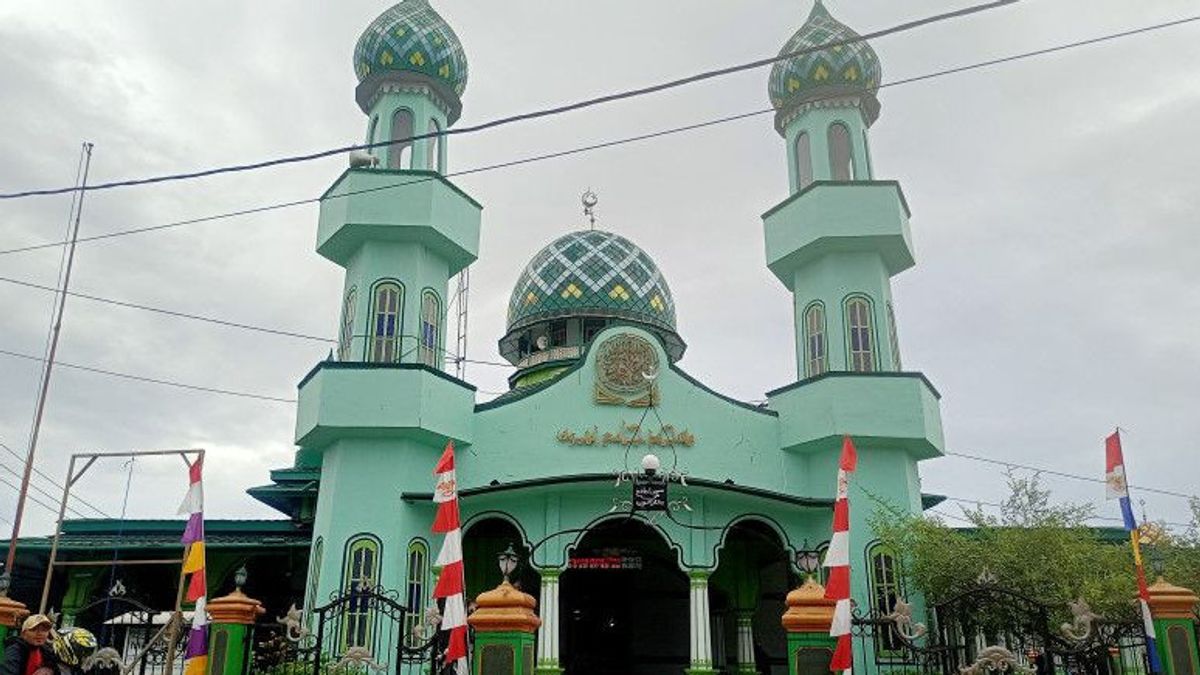The Jami Mosque is located on Jalan Sultan Babullah, Nusaniwe District, Ambon City, Maluku and is located near a river facing the sea.
Jami Mosque is one of the oldest mosques to witness civilization in this city and has suffered repeated damage. Jami Mosque was founded in 1860 on waqf land by a widow named Karie.
Some term the Jami Mosque "mother" of the grandest mosque beside it, namely the Al Fatah Grand Mosque.
That said, the Jami Mosque itself is the forerunner of the birth of the magnificent mosque Al Fatah in the center of Ambon City.
Interestingly, the construction process of the Jami' Ambon Mosque also involves cross-religious communities. The assistance can be in the form of material and energy.
"The land of this mosque is a gift by a widow," said one of the administrators of the Jami' Salem Jamalilel Mosque, quoted by ANTARA, Friday, April 7.
At that time, the construction was not as solid as it is now. At that time, the Jami Mosque was built in a simple, walled manner and the leaves of the rumbia (a palm tree, enau) with a wooden pole.
In the past, the mosque was a center for Muslim religious activities in Ambon City and became one of the facilities of Islamic symbols during the colonial era.
Until in 1898 the simple mosque, which was supported by wood, was renovated with a tin roof and the area expanded.
However, the construction of the Jami Mosque at that time still collapsed when it was hit by a devastating flood due to the overflow of the Wai Batu Gajah River and its buildings washed away with residents' houses in 1933.
Three years later from the disaster, mosque administrators and residents flocked to rebuild the mosque in semi-permanent 1936 and finished in 1940.
Since then the Jami Mosque has begun to be managed in an organized manner through a foundation.
In 1940 before the end of the Dutch Colonial Government in Maluku, Compeni soldiers opened the tap of oil which was next to the upstream of the Wai Batu Gajah River so that the river surface was flooded by oil and then burned. The goal is to prevent the entry of Japanese troops in Ambon City.
The sea of fire broke out in the city known as Ambon Manise.
The Jami' Mosque was also not spared from the flames. The building of the place of worship was scorched to the ground.
However, the mosque was rebuilt independently by Muslims in Ambon as a form of defending the nation and religion.
Jami's Mosque witnessed events after historical events in Ambon City, starting from Dutch colonialism, Japanese arrival, Permesta operations in 1957, the power of the PKI in 1965, to the armed separatist group RMS afterwards.
Mosque spatial planning
Jami Mosque consists of nine main gates, each measuring 3 meters long with a width of 2 meters.
Six main doors lined from the left and right sides of the mosque building. While the other three face up front.
The walls of the mosque are deliberately painted green to add coolness. Green is also one of the favorite colors of the Prophet Muhammad.
At the top, the interior of the old mosque appears in general. There are 36 small conical windows installed around the top wall.
Uniquely, the mosque, which has been standing strong for 163 years, is still supported by linguistic wood and Kani wood on its walls.
The door and window frames can still be said to be original hundreds of years ago.
"These are the doors and the supporting wood are all still genuine," said Jamalilel.
The Jami' Ambon Mosque actually has a historic pulpit which is a gift from the first Vice President of the Republic of Indonesia, Mohammad Hatta.
However, as a form of ukhuwah Islamiyah, the pulpit was given to the Jami' Tulehu Mosque.
At the bottom, the Jami' Ambon Mosque uses 20x40 centimeters of blue-style marble which was imported directly from Italy in 1933.
This is a direct initiation of a handyman named Zainudin. But currently not all marble floors come from Italy, but to maintain their authenticity, the marble is installed under the four main pillars of the mosque.
The Italian marble floor still remains about 5 square meters in the middle of the area on the floor of the mosque. Some of the existing foreign materials will still be preserved as an inseparable part of the history of the founding of the Jami Mosque.
According to history, the original Jami Mosque building is only the four main pillars that are the buffers inside the mosque.
On the front there is a hundreds of years old mosque ladder to clean the upper room of this place of worship.
The most iconic is the mosque bedug which is believed to be hundreds of years old made of the same wood to support the walls of the mosque.
Once A Place Of Buya HAMKA's Da'wah
The influential cleric, Buya HAMKA, also had preaching at the Jami' Ambon Mosque. Precisely in 1933, the chairman of the first Indonesian Ulema Council (MUI) came to Ambon City.
In addition to giving a lecture, Buya HAMKA even led prayers at the mosque.
Currently, the Jami' Ambon Mosque is not just used for worship or religious activities.
At certain times, this mosque is also used by the community to just discuss to rest areas for travelers.
The atmosphere of the crowd will be felt more during the month of Ramadan. Every day, the old mosque provides various snacks for the iftar menu.
"Every day during Ramadan, there is always free breaking the fast together here," said Imam of the Jami Mosque, Muhammad Nunlehu.
The free breaking of fast is one of the habits since the mosque was founded 163 years ago.
"As far as I know, it has been a habit for a long time, this is a place to stop for travelers to break their fast," he said.
Now, the mosque can also be a religious tourist destination for the community.
The history and tolerance inherent in this mosque is a value for tourists who come.
The English, Chinese, Japanese, Arabic, and French versions are automatically generated by the AI. So there may still be inaccuracies in translating, please always see Indonesian as our main language. (system supported by DigitalSiber.id)








